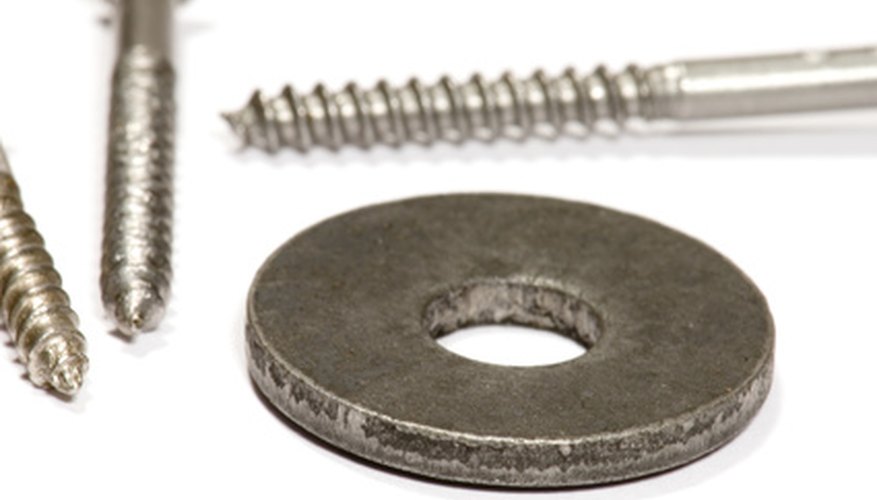Rubber washers seal the area between a metal washer and a drilled hole. Using the correct material and proper tools allows you to make your own rubber washers. Before making a rubber washer you need to determine the outside diameter of the metal washer and the outside diameter of the hole drilled in the base material. Oversizing either hole will prevent the washer from functioning properly.
- Rubber washers seal the area between a metal washer and a drilled hole.
- Before making a rubber washer you need to determine the outside diameter of the metal washer and the outside diameter of the hole drilled in the base material.
Measure the outside diameter of the washer and the outside diameter of the hole in the base material with a steel rule.
Set a piece of 1/2-inch plywood on a firm work surface. Lay a 1/16-inch-thick rubber sheet on top of the plywood.
Mark the outside diameter of the washer on the surface of the rubber sheet with a white paint marker.
Select a punch from a leather punch set matching the diameter of the washer. Align the cutting edge of the punch with the outside diameter marks you placed on the rubber sheet. Hit the end of the punch with a hammer two to three times. Remove the cut piece of rubber from the sheet.
- Mark the outside diameter of the washer on the surface of the rubber sheet with a white paint marker.
- Align the cutting edge of the punch with the outside diameter marks you placed on the rubber sheet.
Align a leather punch matching the outside diameter of the hole drilled in the base material with the centre of the punched piece of rubber. Hit the back of the punch two to three times with a hammer. Remove the cut piece of rubber to finish the rubber washer.
